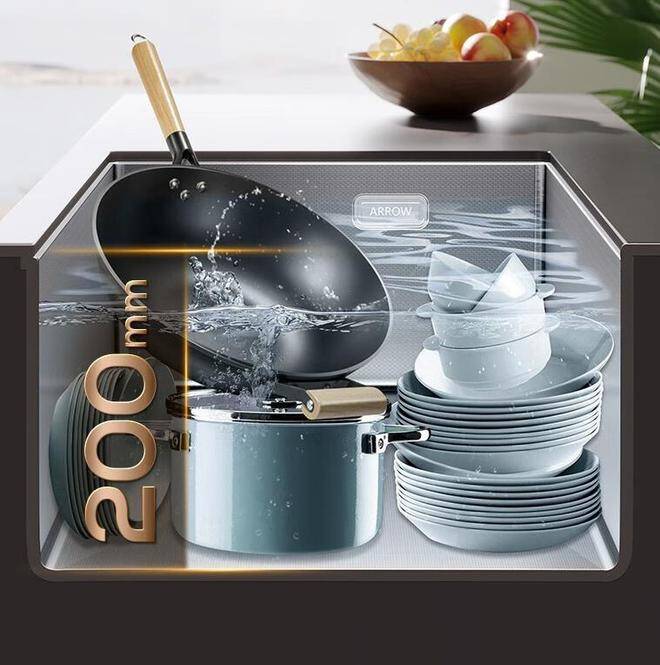There are two main types of sinks on the market: single and double. Many people are confused when it comes to choosing between the two.
Double sinks feature two separate basins, each serving its own purpose. For instance, one basin can be used for washing vegetables, while the other is dedicated to washing dishes, preventing cross-contamination. Additionally, double sinks come in various sizes and shapes, offering flexibility to meet diverse user needs.

However, an increasing number of people are opting not to install double sinks in their kitchens due to certain drawbacks. Here are some reasons why:
**Inconvenience when washing large dishes:** Double sinks are designed to function in separate areas, but the user experience may not meet expectations due to limited space. Specifically, with a total width of 50cm and a length of 85cm, each basin has an average length of only about 42cm, making it impossible to fit large pots and pans entirely.
On the other hand, single sinks offer larger capacity and a better user experience for daily tasks. Cleaning pots and pans becomes more convenient, providing users with more flexibility in their cooking and cleaning routines.

**More complex plumbing:** There is a difference in the plumbing systems between double and single sinks. Double sinks have a more complex system, especially for households intending to install a garbage disposal, water filter, or dishwasher. This complexity can also increase the risk of clogged drains.

**Advantages of double sinks are less apparent:** Double sinks are often considered superior to single sinks due to their ability to function independently in different areas. However, single sinks can also be used effectively with simple modifications. For instance, users can install a drainboard or a small basin inside a single sink, allowing for flexibility between single and double sink functionality. These accessories are often included with the purchase of a sink, providing convenience and maximizing space efficiency.

**Increasing popularity of dishwashers:** Dishwashers are becoming more common in households, improving the quality of life for many families. With technological advancements, modern dishwashers can handle various foods, including vegetables, seafood, and more. As a result, the role of the kitchen sink has diminished, as it is now primarily used for cleaning specific items or as an aesthetic feature.

**How to choose a single sink:** Single sinks offer several advantages over double sinks, including larger capacity, space-saving design, and simpler plumbing. When choosing a single sink, consider the following tips:
– Opt for a design with rounded corners instead of sharp angles. Rounded corners are easier to keep clean as they reduce the buildup of dirt and grease.

– Choose a style with the drain located on the side rather than in the center. This design maximizes the usable space at the bottom of the sink.
– Select a sink with a thickness of 3mm or more to ensure durability and reduce the risk of deformation or breakage. A depth of more than 20cm is also recommended to accommodate larger items and prevent water splashing.

– Look for a sink with an anti-condensation coating on the bottom to prevent moisture buildup and mold. Additionally, choose a sink with a sound-absorbing pad to reduce noise when draining water.
– Regarding material, choose a sink with a scratch-resistant, stain-resistant, and wear-resistant surface for enhanced practicality and longevity.
– When purchasing a stainless steel sink, opt for 304-grade stainless steel, which meets food-grade standards and offers safer and more reliable performance than 201-grade stainless steel.
Unlock the Door to a World of Enchantment: Step Inside and Uncover the Mystery
When you enter a home, and your eyes are immediately drawn to three specific things, it’s important to take note. These items, if positioned incorrectly, can bring about a sense of disharmony for the homeowner. It is believed that by either relocating or mitigating the impact of these items, a sense of balance and prosperity can be restored.






































